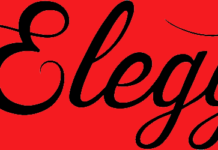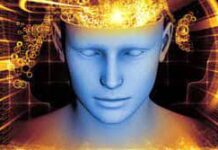Character and Characterization
Character and Characterization
Literally, the word ‘Character’ means the collective mental or moral qualities of a person or thing. But literary (in literature) the term refers to the person who gets depicted in a play, novel, story, or in any piece of literary creation. The characters in any literary writing may get expressed and delineated through- (1) Objective Narration (2) Dialogues (speeches, soliloquies, monologues etc) and (3) Action (deeds).
The characters in any literary writing may be depicted as (1) Stable (Firm) and (2) Changing (Developing). A Stable Character is called him who is depicted as unchanging in his dealing, outlook and disposition from beginning to the very end. On the other hand, the character that undergoes a radical change either through a gradual development or as a result or pressure of circumstance is called Changing Character.
Characterization may be of two types as: (1) Type and (2) Individual (Peculiar). A Type Character is one who gets depicted as the representative of a class, group or region with distinct ethos. On the other hand, an Individual Character is one who is depicted with his peculiar or special habits, qualities, and whims which distinguishes him from his class. We can clarify these two types of characterization with an illustration from Geoffrey Chaucer’s ‘The Canterbury Tales’. Almost all the characters of this narrative poetry are characterized as both types and individuals. For example ‘The Knight’ is a character who is characterized by the author as a real representative of the code of behavior that prevailed in those days among the members of this class (Knights). The Knights were required to be just, provident and pure. They were expected to serve Christianity against the barbarians. They were not only to be the champions of the church, but also the protectors of the weak and exemplars of moral virtues. There is no doubt that Chaucer’s Knight fulfills all these types of conditions. At the same time, Chaucer has portrayed him with certain individual characteristics as- he is, in his manner, modest as a maiden. His garments are not gaudy but coarse.
On the basis of the roles played by the characters in a play, novel, story, or any literary writing, characters may be classified into two classes as- (1) Major Characters and (2) Minor Characters. The characters that are involved in the theme of a story from the beginning to the end and play important roles in the development of the theme and thus lead the plot to the conclusion are called Major Characters. One or two of the major characters who take the leading role from the very beginning to the end of the story and rounding whom the theme and all other characters revolve is called Hero or Heroine (Protagonist).
On the other hand, the person (character) who plays the role against the hero or heroine from the beginning to the end and causes troubles, conflicts and sufferance to the hero or heroine or to both and thus leads the theme to a conclusion through some steps as- opening, conflict, crisis, fall and conclusion is called Anti-hero (Antagonist). For example, we can take Henry Fielding’s novel entitled ‘Tom Jones’ which contains above forty characters. But among them, only six characters played important roles involving into the theme of the story from the beginning to the end. These characters are- Tom Jones, Sophia, Squire Allworthy, Squire Western, Blifil and Patridge. Among them, Tom Jones is the Hero and Sophia is the Heroine because all the other characters revolve around them. Blifil is the Anti-hero (Antagonist) as he stands in the way of the love affairs between Tom Jones and Sophia. All other characters in the novel are Minor characters because they play less important or partial roles.
Characterization may be realistic, psychological, humorous (comic), tragic, tragi-comic, ideological, and so on. The characters based on convincing realism and accuracy of details render enduring popularity to any piece of literature. In the English language, there is no dearth of creators of great characters. Among them, mention may be made of Geoffrey Chaucer, William Shakespeare, Henry Fielding, and Charles Dickens. 0 0 0.
Character and Characterization
N. B. The article ‘Character and Characterization’ originally belongs to the book entitled ‘Menonimus Dictionary of Literary Terms‘.
Character and Characterization
Books on Literary Criticism by M. Menonimus:
- World Short Story Criticism
- World Poetry Criticism
- World Drama Criticism
- World Novel Criticism
- World Essay Criticism
- Indian English Poetry Criticism
- Indian English Poets and Poetry Chief Features
- Emily Dickinson’s Poetry-A Thematic Study
- Walt Whitman’s Poetry-A Thematic Study
- Critical Essays on English Poetry
- Tawfiq al-Hakim’s Novel: Return of the Spirit-An Analytical Study
- Tawfiq al-Hakim’s Novel: ‘Yawmiyyat Naib Fil Arayaf’-An Analytical Study
- Analytical Studies of Some Arabic Short Stories
- A Brief History of Arabic Literature: Pre-Islamic Period (500 AD-622 AD)
- A Brief History of Arabic Literature: Early Islamic Period (622 AD-661 AD) …
Related Search:
- Characters and Characterization
- Characterization: Types of Character
- Difference Between Characters and Characterization
- The Art of Characterization












[…] the realm of literature, characterization is a potent tool that transcends mere description. It is the key to forging emotional connections […]